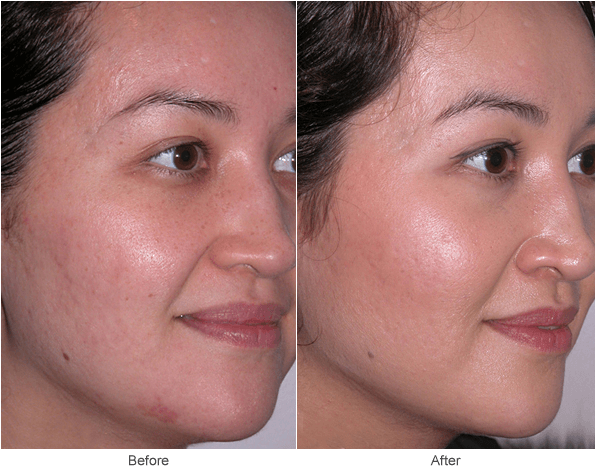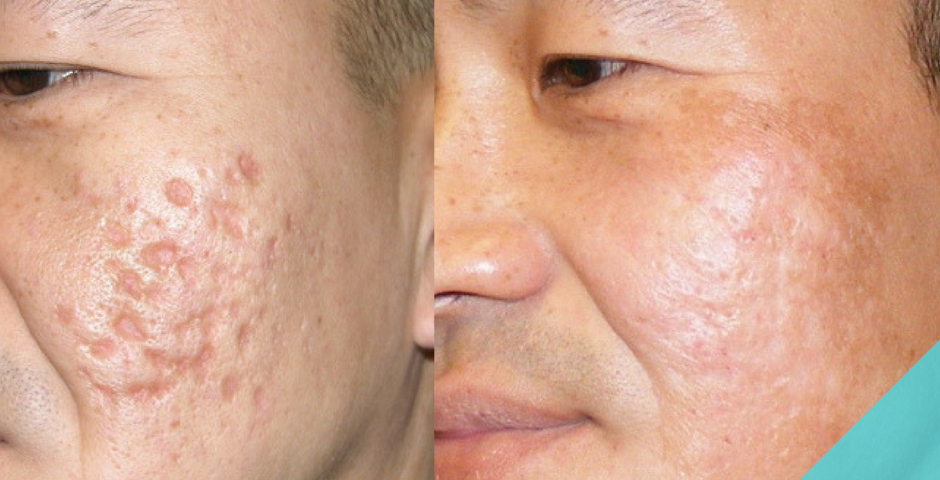Recognizing the Various Skin Problems and Effective Therapy Choices for Acne Marks
Acne scars stand for a complex interaction of skin problems that substantially impact people' self-esteem and general skin wellness. Recognizing the distinctive sorts of acne scars-- atrophic and hypertrophic-- alongside their underlying reasons, is essential for figuring out efficient treatment strategies. Different restorative alternatives exist, varying from innovative skin-related procedures to all-natural remedies. The efficacy of these therapies usually pivots on individualized assessments by certified specialists. As we explore the landscape of acne mark management, it ends up being evident that the journey towards clearer skin might involve greater than just topical remedies.
Types of Acne Scars
Acne scars can materialize in various kinds, each calling for details therapy techniques. Both key classifications of acne scars are hypertrophic and atrophic marks. Atrophic marks are identified by a loss of cells, leading to clinically depressed locations on the skin. These marks are more categorized right into 3 subtypes: ice choice scars, which are deep and slim; boxcar marks, which are broader and have well-defined edges; and rolling marks, which create a wave-like appearance as a result of unequal skin appearance.
In contrast, hypertrophic marks result from an overproduction of collagen during the recovery process, resulting in increased areas on the skin. These marks are commonly solid and can vary in shade, often appearing red or darker than the surrounding skin.

Root Causes Of Acne Scarring
Marking happens as a result of the body's all-natural healing action to swelling and injury triggered by acne lesions. When acne types, it triggers an inflammatory action, causing the release of various cytokines and development aspects that promote recovery. This procedure can often lead to too much tissue formation or poor fixing, resulting in scars.
The key root causes of acne scarring include the seriousness of the acne itself, period of the lesions, and individual skin kinds. Severe inflammatory acne, such as blemishes and cysts, is much more likely to lead to scarring due to deeper cells damage. Additionally, improper handling of acne lesions, such as choosing or pressing, can intensify cells injury and swelling, boosting the possibility of scarring.
Hereditary proneness likewise plays a considerable function; people with a family members history of scarring are at a higher risk. Skin type and color can affect scar development, as darker skin tones may experience post-inflammatory hyperpigmentation, while lighter skin might develop atrophic marks.

Treatment Alternatives for Scarring
Effective therapy choices for acne scarring differ depending upon the type and seriousness of the scars. Normally categorized right into atrophic, hypertrophic, and keloid scars, these conditions require customized techniques for ideal results.
For atrophic marks, which are identified by a loss of tissue, therapies such as chemical peels, microdermabrasion, and laser treatment are generally utilized. These techniques advertise skin renewal and promote collagen manufacturing, therefore boosting skin texture. Subcision, a minimally intrusive treatment, can also work by separating coarse bands below the skin.
Keloid and hypertrophic marks can be more testing to treat. Alternatives consist of corticosteroid injections to minimize swelling and squash the scars. acne scars treatment. In many cases, cryotherapy or laser treatment may be advised to minimize their look
Surgical options are offered for extreme scarring, where excision or skin grafting might be essential. It's necessary for individuals to seek advice from a dermatologist to assess their specific scar kind and review one of the most ideal therapy plan. Incorporating multiple treatments commonly generates the ideal outcomes, ensuring that each individual's distinct skin problem is attended to effectively.
Home Treatments and All-natural Solutions
Natural services and natural remedy can provide an available method for individuals seeking to improve the look of acne scars. Different ingredients located in the home kitchen have actually demonstrated possible advantages in boosting skin structure and advertising healing.
One popular solution is aloe vera, recognized for its calming and anti-inflammatory properties. Using click for source fresh aloe vera gel directly onto the scars can assist improve skin hydration and decrease soreness. Honey possesses natural anti-bacterial and moisturizing top qualities that can assist in mark healing. It can be utilized as a mask, left on for thirty minutes prior to rinsing.
One more effective alternative is lemon juice, which functions as a natural exfoliant and Learn More Here can lighten hyperpigmentation. It needs to be utilized meticulously, as it may create photosensitivity. Oatmeal masks are additionally valuable; their gentle peeling can help remove dead skin cells while relaxing irritability.
Important oils, such as tea tree oil and lavender oil, can additionally support scar healing because of their antimicrobial homes. It is critical to execute a patch examination before applying any treatment to make sure there are no unfavorable responses. These natural services can be a complementary method in the trip to diminish acne marks.
Preventing Future Scarring
Embracing a proactive technique to skincare can significantly decrease the threat of creating future acne scars. Routine cleansing, exfoliation, and hydration can aid preserve skin wellness and prevent blocked pores.
In addition, avoiding the temptation to pick or squeeze acne lesions is critical, as this can result in inflammation and succeeding scarring. Instead, people ought to concentrate on applying topical treatments that promote recovery and minimize inflammation. Active ingredients such as salicylic acid, benzoyl peroxide, and retinoids are understood for their efficiency in taking care of acne and minimizing marks.

Last but not least, maintaining a healthy diet plan abundant in antioxidants and remaining hydrated supports skin regrowth. By implementing these safety nets, people can substantially reduce their risk of future scarring and advertise general skin health and wellness.
Conclusion
In verdict, a thorough understanding of acne marks, including both atrophic and hypertrophic kinds, is necessary for reliable therapy techniques. Consultation with a dermatologist stays imperative to design customized approaches that think about specific skin types and mark extent, ultimately boosting the efficiency of scar monitoring techniques.
Acne scars represent an intricate interplay of skin problems that considerably impact people' self-esteem and overall skin wellness. The two key classifications of acne marks are atrophic and hypertrophic scars. These scars are further identified into 3 subtypes: ice pick marks, which are deep and slim; boxcar scars, which are larger and have well-defined edges; and rolling marks, which develop a wave-like look due to irregular skin structure.
A comprehensive appointment with a skin doctor can aid establish the most suitable intervention, taking right into account the person's skin kind, mark seriousness, and total skin health.
Assessment with a dermatologist remains essential to devise individualized approaches that take into consideration specific skin kinds and mark extent, ultimately enhancing the efficiency of scar administration strategies.